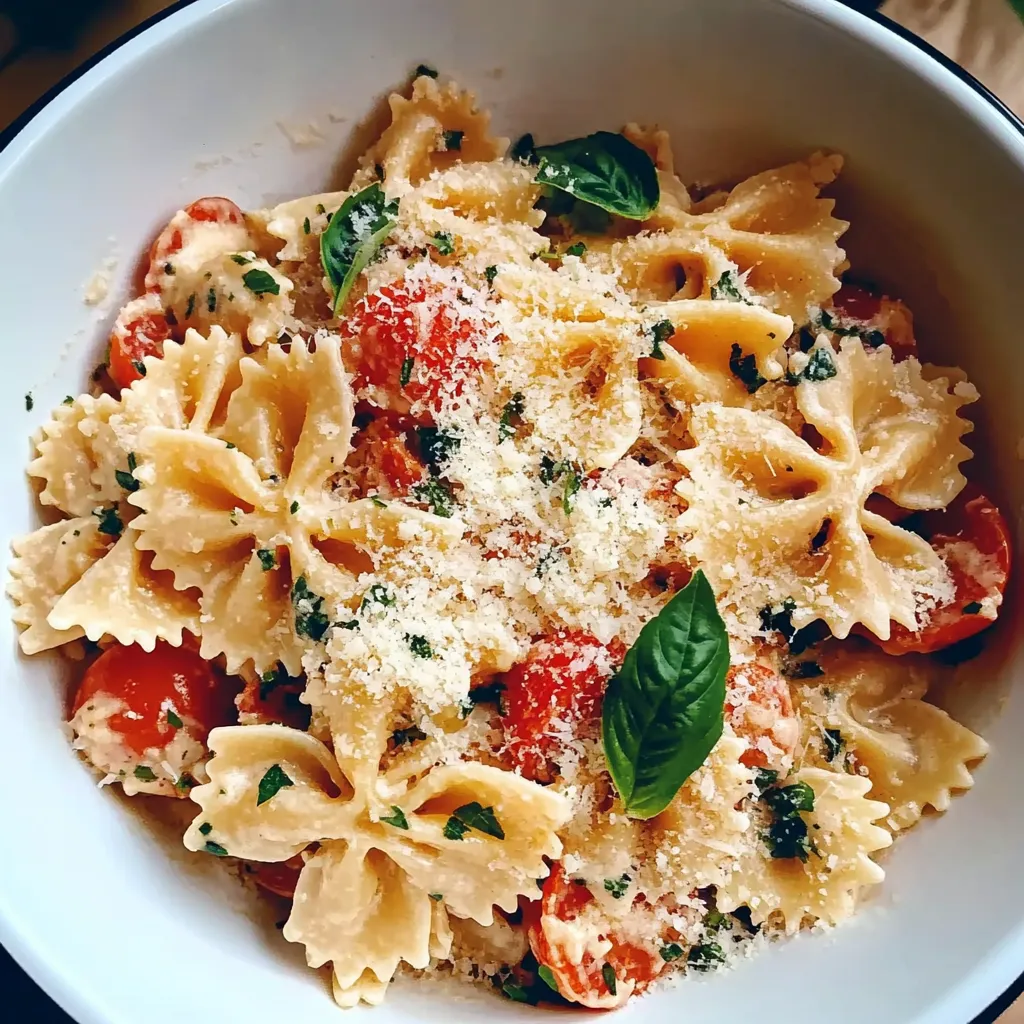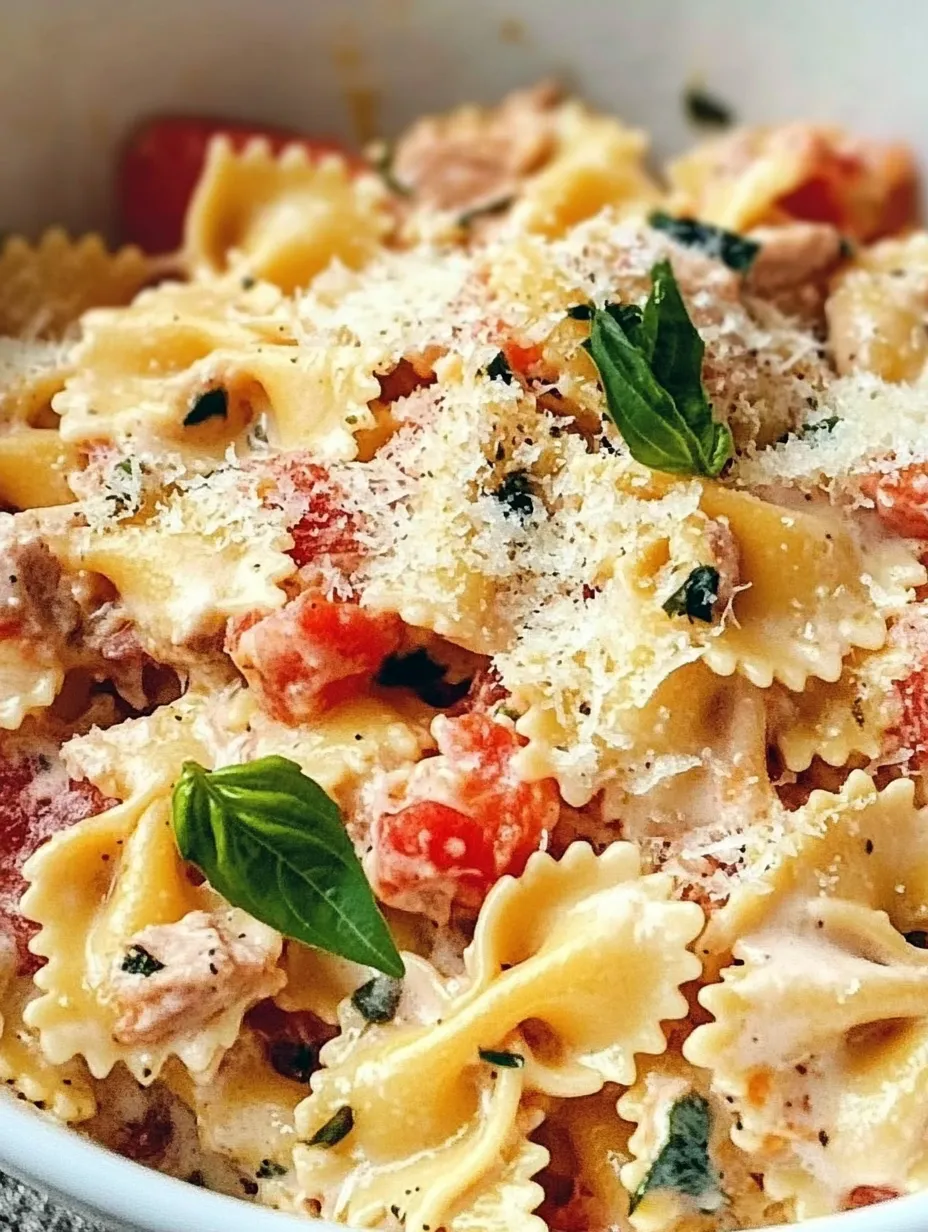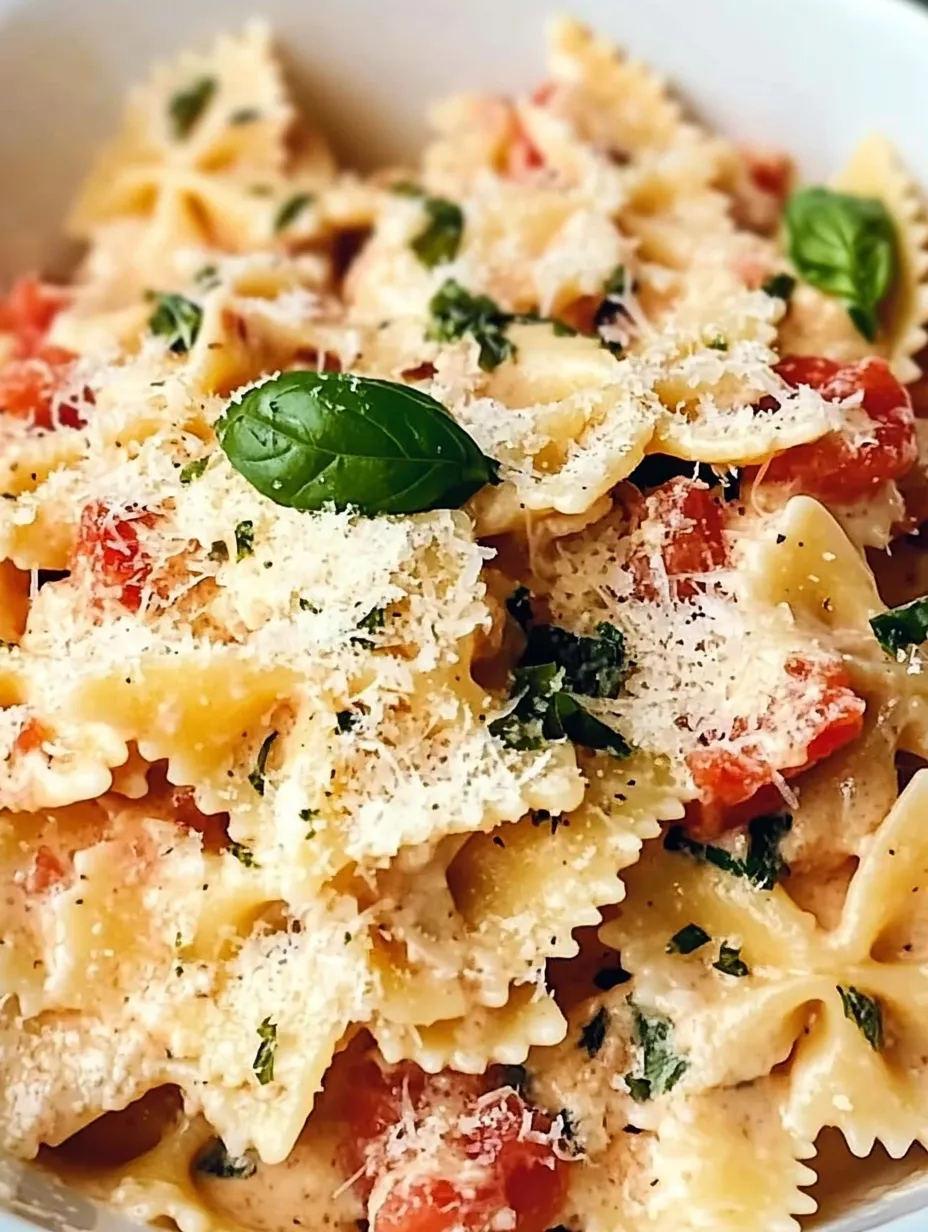 Pin it
Pin it
Mediterranean Magic Pasta
This extraordinary pasta dish transforms humble ingredients into culinary magic through the simple alchemy of oven roasting that creates an incredibly luscious sauce. The genius lies in placing a whole block of feta among bursting tomatoes, allowing heat to slowly melt the cheese into a creamy base that coats every pasta strand perfectly. I discovered this recipe during those locked down months when everyone was seeking kitchen miracles from pantry staples, and it has remained in regular rotation long after for good reason.
Effortless Elegance
My journey with this pasta began skeptically, as viral recipes often promise more than they deliver. What started as culinary curiosity quickly became a household staple that even my cheese averse teenager requests regularly. Even my mother, typically dismissive of "internet recipes," asked for detailed instructions after her first bite. The combination of minimal effort and maximum flavor makes this dish particularly valuable during hectic seasons when cooking elaborate meals feels impossible yet the soul craves something beyond basic sustenance.
Quality Components
- Cherry Tomatoes (2 pints): These small flavor bombs concentrate dramatically during roasting, releasing their sweet juices to form the sauce base while maintaining some structural integrity
- Block Feta Cheese (8 ounce block): The star ingredient that transforms from crumbly and tangy to creamy and mellow during its time in the oven, creating a sauce impossible to replicate with pre crumbled varieties
- Quality Olive Oil (1/3 cup): Forms the essential flavor foundation that infuses throughout during roasting while preventing the cheese from drying out
- Fresh Garlic (4 cloves): Mellows beautifully during roasting, infusing the oil with aromatic depth without the sharpness of raw preparation
- Short Pasta (12 ounces): Creates the perfect vehicle for capturing the creamy sauce in every ridge and hollow, with penne, rotini, or orecchiette being particularly effective choices
- Fresh Basil (1/2 cup): Adds bright, aromatic contrast to the rich, creamy elements when added at the final moment, preserving its vibrant flavor and color
 Pin it
Pin it
Simple Technique
- Roasting Preparation:
- Begin by preheating your oven to 400°F, creating the perfect environment for gentle cheese melting and tomato bursting. In a 9x13 inch baking dish or similar sized oven safe vessel, place two pints of cherry tomatoes, keeping them whole with stems removed. Drizzle with 1/4 cup good quality olive oil, ensuring most tomatoes receive some coating. Sprinkle with 1/2 teaspoon sea salt and 1/4 teaspoon freshly ground black pepper, then toss gently to distribute the seasonings evenly. Create a space in the center of the tomatoes and place the entire 8 ounce block of feta cheese in this clearing. Drizzle the feta with the remaining olive oil and sprinkle with 1 teaspoon Italian seasoning blend. Add 4 peeled whole garlic cloves scattered among the tomatoes, which will roast to sweet perfection alongside the other components. For those enjoying some heat, a pinch of red pepper flakes adds pleasant warmth without overwhelming the dish.
- Oven Transformation:
- Place the prepared baking dish in the preheated oven and allow the magic to happen undisturbed for approximately 35 minutes. During this time, the tomatoes will begin to burst, releasing their flavorful juices that mingle with the olive oil. The feta will gradually soften, first at the edges and eventually throughout, transforming from crumbly to creamy as it absorbs the surrounding flavors. The garlic cloves will become tender and sweet, ready to be mashed into the sauce. You'll know the dish is ready when the tomatoes have burst, their skins have slightly wrinkled, and the feta has softened completely with a light golden hue on top. This visual transformation signals the perfect moment to proceed to the next step, with the kitchen now filled with an irresistible Mediterranean aroma.
- Pasta Perfection:
- While the tomatoes and feta roast, bring a large pot of generously salted water to a rolling boil. The water should taste like the sea, as this is your only opportunity to season the pasta itself. Cook 12 ounces of your chosen short pasta according to package directions until just al dente, typically 1 to 2 minutes less than the suggested cooking time. This slight undercooking allows the pasta to finish in the sauce without becoming mushy. Before draining, reserve approximately 1 cup of the starchy pasta water, which contains essential starch that helps bind the sauce to the pasta. Drain the pasta but do not rinse, as the surface starch is crucial for proper sauce adhesion. The timing should align with the feta and tomatoes finishing their roasting period, allowing for immediate combination while everything is perfectly hot.
- Harmonious Integration:
- Remove the baking dish from the oven and marvel at the transformed ingredients. Using a fork or potato masher, gently press the softened feta and roasted garlic cloves, combining them with the burst tomatoes and their released juices. The result should be a creamy, slightly chunky sauce with visible pieces of tomato providing textural interest. Add the drained pasta directly to the baking dish, gently folding to coat each piece with the creamy sauce. If the mixture seems too thick or dry, add reserved pasta water a few tablespoons at a time until reaching the desired consistency. Tear fresh basil leaves into the pasta, reserving a few for garnish, and fold gently to incorporate their fragrance without wilting or darkening them. The residual heat from the pasta and sauce will release the basil's essential oils without cooking away its brightness.
I particularly cherish how this recipe connects to Mediterranean traditions while fitting perfectly into modern cooking needs. Growing up with a Greek grandmother who labored for hours over authentic dishes, I initially felt slightly guilty about the simplicity of this approach. However, the way this dish honors good ingredients through gentle cooking aligns perfectly with her culinary philosophy, if not her specific techniques. When serving this pasta to friends for the first time, their expressions of disbelief upon learning how few ingredients and steps were involved created genuine amusement. My neighbor, typically intimidated by cooking, mastered this as her first "impressive" dish, building kitchen confidence that has since expanded her culinary repertoire significantly.
Perfect Pairings
This versatile pasta welcomes numerous accompaniments depending on the occasion and season. For a complete Mediterranean inspired meal, serve alongside a simple Greek salad with crisp cucumbers, kalamata olives, and red onion dressed lightly with lemon and olive oil. Warm, crusty bread makes an essential partner for capturing any remaining sauce too precious to leave behind. During summer months, grilled vegetables like zucchini or eggplant provide complementary flavors that extend the Mediterranean theme. For protein addition, consider serving with simple grilled chicken breasts seasoned only with lemon, oregano, and olive oil that won't compete with the pasta's complex flavors. Wine enthusiasts will appreciate how nicely this dish pairs with medium bodied whites like Vermentino or Greco di Tufo that complement the tangy feta without overwhelming the tomato sweetness.
Creative Adaptations
This foundation recipe welcomes numerous variations based on preference or available ingredients. For additional vegetable content, add a few handfuls of baby spinach immediately after combining the hot pasta with the sauce, allowing residual heat to wilt it perfectly. Those enjoying briny flavors might incorporate halved kalamata olives or capers into the roasting pan during the last 10 minutes of cooking. Herb variations create entirely new experiences, with fresh thyme or oregano adding more traditional Greek notes or mint contributing unexpected brightness. For additional depth, consider adding a splash of balsamic vinegar to the tomatoes before roasting, which caramelizes slightly to create subtle sweetness. Protein adaptations might include adding cooked chicken, shrimp, or cannellini beans after the sauce has formed but before adding pasta. Those preferring a spicier profile can increase red pepper flakes or add a drizzle of chili oil just before serving.
 Pin it
Pin it
Storage Wisdom
While this pasta reaches its pinnacle of perfection immediately after preparation, leftovers can be properly stored and enjoyed later. Transfer any remaining pasta to an airtight container and refrigerate for up to four days, though the texture is best within the first two days. When reheating, add a small splash of water or olive oil before warming gently over medium low heat, which helps revitalize the sauce that naturally thickens when chilled. Microwave reheating works in a pinch when covered and stirred halfway through, though stovetop methods better preserve the original creamy texture. This dish is not ideal for freezing, as the sauce tends to separate and the pasta becomes mushy upon thawing. For meal planning purposes, consider preparing the tomato feta base ahead of time and refrigerating, then reheating and adding freshly cooked pasta when ready to serve, though the texture won't quite match the original one pan approach.
After preparing this pasta countless times through changing seasons and circumstances, I've come to appreciate it not just as a delicious meal but as a perfect example of how cooking doesn't need to be complicated to be extraordinary. What begins as humble ingredients transforms through gentle heat into something far greater than the sum of its parts. The beautiful simplicity of this approach reminds us that good cooking often requires restraint rather than complexity, allowing quality ingredients to express themselves fully. While social media trends typically fade quickly, this recipe has earned its permanent place in countless kitchens by delivering genuine culinary pleasure through honest, unpretentious techniques that connect us to the timeless wisdom of Mediterranean cooking traditions.
Frequently Asked Questions
- → What type of feta cheese works best for this pasta dish?
- Traditional Greek feta made from sheep's milk or a combination of sheep's and goat's milk delivers the best flavor and creamiest texture for this dish. Most importantly, use a block of feta rather than pre-crumbled feta. The block has higher moisture content and melts into a much creamier sauce, while pre-crumbled feta often contains anti-caking agents that prevent proper melting. French feta tends to be milder and creamier if you find regular feta too tangy. Bulgarian feta is typically saltier and more robust. If you cannot find feta, goat cheese can work as a substitute, though it will provide a different flavor profile.
- → Can I add other vegetables to this baked feta pasta?
- Absolutely! This recipe is wonderfully adaptable. For vegetables that benefit from roasting, add them to the baking dish alongside the tomatoes at the beginning: try bell peppers, zucchini chunks, small broccoli florets, or asparagus pieces. Quick-cooking or leafy vegetables should be added after baking: spinach, arugula, or fresh peas can be stirred in when mixing the pasta with the sauce, allowing the residual heat to wilt them. For a more substantial dish, add artichoke hearts, olives, or sun-dried tomatoes after baking. Just ensure any additional vegetables are cut to appropriate sizes for even cooking and don't release excessive water that might dilute the sauce.
- → What's the best pasta shape to use for this recipe?
- Short pasta shapes with ridges or crevices work best as they capture and hold the creamy tomato-feta sauce effectively. Penne, rigatoni, farfalle (bow tie), fusilli (spiral), and orecchiette (little ears) are all excellent choices. The ridges and texture of these pasta shapes allow the sauce to cling rather than slide off. Tube-shaped pastas also have the advantage of catching sauce inside, creating perfect little bites. While long pastas like spaghetti or linguine can certainly work, they're more challenging to mix evenly with the chunky components of this sauce. For a healthier alternative, this sauce also pairs beautifully with whole wheat pasta or chickpea pasta.
- → Can I make this dish ahead of time?
- While this pasta is best enjoyed freshly made, you have several make-ahead options: 1) Prepare the tomato and feta bake up to 2 days ahead and refrigerate. Reheat in the oven at 350°F until warm before mixing with freshly cooked pasta. 2) Completely prepare the dish and refrigerate for up to 3 days. Reheat portions in the microwave with a splash of water, or the entire dish covered in the oven at 350°F with a few tablespoons of water to revive the sauce. 3) For longer storage, freeze the sauce (without pasta) for up to 3 months. Thaw overnight in the refrigerator and heat before mixing with fresh pasta. The texture may change slightly upon reheating, but the flavor will remain delicious.
- → Why is my sauce too dry/too watery?
- If your sauce is too dry, there are several possible reasons: 1) The feta cheese was low in moisture content to begin with. 2) The dish may have been over-baked, causing too much liquid to evaporate. 3) Not enough pasta water was reserved. To fix, add reserved pasta water a tablespoon at a time until you reach your desired consistency. If your sauce is too watery, it could be because: 1) Your tomatoes released excessive moisture. 2) The pasta wasn't drained well enough. 3) You added too much pasta water. To thicken, continue cooking the mixture over low heat until some liquid evaporates, or add a little more grated parmesan cheese to help bind the sauce.
- → How can I add protein to make this a more complete meal?
- There are many ways to incorporate protein into this dish: 1) Add grilled or rotisserie chicken, cut into bite-sized pieces, when tossing the pasta with the sauce. 2) Mix in shrimp sautéed with garlic and oil just before serving. 3) For a vegetarian option, add white beans (cannellini or great northern) or chickpeas during the final mix - they complement the Mediterranean flavors perfectly. 4) Crumble cooked Italian sausage or ground turkey seasoned with Italian herbs over the top. 5) For a special occasion, top with grilled salmon. 6) Simply serve with a side of grilled chicken or fish for those who want protein separate from the pasta. Whichever protein you choose, season it in a way that complements the tangy, herby flavors of the pasta dish.
